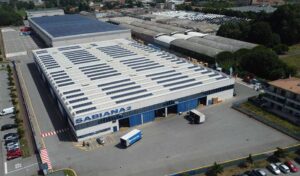Emerson loses $14.7m injury appeal
20th October 2018
USA: A Texas appeals court has upheld an award of nearly $14.7m against Emerson in a terminal venting case.
Emerson and its subsidiary Fusite had appealed the original jury trial decision in 2016, which had found in favour of Clarence Johnson, a licensed HVAC engineer. Johnson had been seriously injured by the explosion of a Copeland compressor that was designed and sold by Emerson and equipped with a terminal designed and manufactured by Fusite.
Johnson was awarded $14,669,796.60 in damages. A further $18,298.11 was ordered to be recovered for the Insurance Company – Miller Food Mart’s insurer – which had intervened in the case.
Replacement
The incident dates back to 2012 when Johnson, who had owned his own HVAC servicing business since the mid-1990s, was called in to replace one of two compressors in a rooftop air conditioning unit at a Miller Food Mart.
The day following the installation of the new Emerson compressor, Johnson received a report that the system was not working properly. When Johnson arrived at the store, his nephew and assistant, Antonio Morris, had already arrived. Morris told Johnson that the fuses had blown in the disconnect box attached to the air conditioning unit. This did not cause Johnson any specific concerns about the new Emerson compressor because this particular HVAC unit had a tendency to blow fuses.
After the men replaced the fuses and reset the breaker, Johnson turned the air conditioning unit on and heard an unusual noise, “a rumbling or something,” and he began to look for the source.
Johnson was unaware that the compressor had suffered an internal failure and excessive heat inside the compressor had begun to soften the glass insulation holding the terminal pins.
After isolating different components, Johnson determined that the sounds came from the new Emerson compressor. When Johnson removed the cover to get an Ohm reading on the new compressor, a terminal vent occurred. Two of the three terminal pins shot out of the Emerson compressor, allowing scalding hot refrigerant and oil to spray out of the terminal. The oil and refrigerant mix ignited and covered Johnson in flames. As a result, Johnson suffered second- and third-degree burns on over 60% of his body.
Warnings
The jury was told that a competitor of Emerson’s in the HVAC compressor market includes warnings with its compressors to “be alert for sounds of arcing, sizzling, sputtering, or popping inside the compressor” and to immediately step away if such sounds are heard. However, the Emerson compressor Johnson installed at the Miller Food Mart did not include such warnings.
According to Johnson, before removing the terminal’s cover, he turned off power to the HVAC unit by pulling out the fuse disconnect. Morris initially told fire investigators—on the day of the incident—that he thought Johnson had left the main disconnect in the HVAC unit. But, Morris also stated that he thought there was no power to the Emerson compressor because he and Johnson removed some of its wires and that he did not understand how the compressor could have exploded when it did not have power connected to it. When firefighters arrived at the scene after the terminal venting, they found the fuse disconnect sitting atop the air conditioning unit, where Johnson said he left it.
Johnson sued Fusite and Emerson, asserting claims of design defects and marketing defects based in negligence and strict products liability, failure to correct dangerous and hazardous conditions, and gross negligence.
Liability
The jury found in favour of Johnson on all of his liability claims. Specifically, the jury found that the Fusite terminal had a design defect that was a producing cause of the occurrence or injury. In addition, the Emerson compressor had two design defects—the absence of a system for monitoring the electric current to the pins or for monitoring their temperature and the absence of a permanent guard on the Emerson compressor housing. Thirdly, a defect in the Emerson compressor’s warnings or instructions was also seen as a contributory cause of the occurrence or injury.
The jury also found that Johnson was proportionally responsible to the tune of 10% for the occurrence or injury.
Among a number of points, Fusite and Emerson had challenged the legal and factual sufficiency of the evidence supporting the jury’s verdict on Johnson’s design defect claims, marketing defect claims, and the $3m of mental anguish damages.







